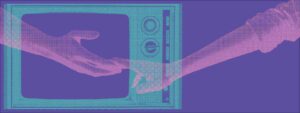Wired for Wellness
Kiersten Downing

Meet the internet of medical things
As technology advances at an unprecedented pace, our world is evolving into a highly interconnected ecosystem where communication flows seamlessly between devices, systems, and people. At the forefront of the technological revolution is the Internet of Things (IoT), an interconnected network of devices that communicate and collaborate autonomously, seamlessly integrating into our daily routines and environments. IoT is transforming the applications that define modern living, from transportation systems that optimize how we move through our cities to smart home automation that enhances security and convenience. Among the most transformative applications is the IoT of healthcare, where real-time health monitoring and delivery of services are being streamlined through devices to administer patient care more effectively.
The Internet of Medical Things (IoMT) represents a groundbreaking advancement in the healthcare sector in how medical data is collected, processed, and utilized. This innovative system consists of sensors in medical equipment designated to gather patient information (such
as vital signs and biometric data) that are transmitted to IoT platforms for processing and storage. These empower professionals and patients alike to access critical information in real time through the information transmitted into user-friendly mobile applications connected to the IoMT network. This seamless integration enables real-time health management, enhances the quality of care services, and fosters a more cost-effective healthcare system.
“…wearable technology cultivates a culture where proactive measures are prioritized while enhancing quality of life. “

IoMT has witnessed remarkable growth in recent years as its valuation has soared to $50.3 billion in 2020. This surge can be attributed to the COVID-19 pandemic due to the urgent need for innovative healthcare solutions that adapt to unprecedented challenges. As the healthcare industry increasingly adopts this technology, this upward trajectory shows no signs of slowing down, with estimates anticipating an impressive valuation of $135.87 billion by 2025. Approximately one-third of all Internet of Things (IoT) devices are deployed in healthcare settings and will continue to account for the global IoT market.
One of the most critical areas where the IoMT is making a substantial impact is Intensive Care Units (ICUs). These specialized environments require continuous monitoring of patient conditions due to the severity and complexity of the cases treated. In ICUs, every moment counts when a patient’s data can be the difference between life and death. These sophisticated monitors track essential vital signs like heart rate, blood pressure, oxygen saturation, and respiratory rate, providing healthcare professionals with real-time data on the status of their patients. The continuous monitoring capability of these devices is crucial when responding to changes in the patient’s conditions and helps facilitate quicker interventions that can lead to improved outcomes.
Beyond hospital settings, home health services are increasingly leveraging the advancements of the IoMT through various telehealth platforms. Remote monitoring systems have become a favored solution for healthcare providers aiming to enhance patient care from a distance. Cogsence is the leading forefront of in-home health services by enhancing remote patient monitoring to reduce the reliance on in-person visits. A key breakthrough by Cogsence is its smartphone-compatible photochemical data acquisition tool, designed for seamless point of care testing (POCT). This tool enables quick and accurate blood liquid analysis using only a fingertip blood sample and delivers precise measurements of cholesterol, triglycerides, and lipoprotein levels. Through this seamless integration, Cogsence redefines diagnostics by providing patients with a convenient and highly reliable alternative to traditional clinical testing. The system enables real-time data exchange while enhancing communication and empowering proactive management of their well-being.
The evolution of IoMT has extended to wearable technology and fundamentally transformed how individuals engage with their health and fitness in daily life. Wearable devices, such as smartwatches and fitness trackers, have become indispensable tools for monitoring metrics like step count, heart rate, and calorie expenditure. They have become vital in today’s fast-paced world, where people frequently juggle multiple responsibilities and may neglect their health needs. As a result, wearables have emerged as essential to promoting a health-conscious lifestyle that is seamlessly integrated into daily routines. This has motivated the growing importance of preventative care and informed decision-making. By empowering individuals to take charge of their health, wearable technology cultivates a culture where proactive measures are prioritized while enhancing quality of life.
This revolutionary shift in the digital landscape is transforming how the medical field enhances patient care through real-time monitoring and data-driven insights. Integrating IoMT into clinical settings, home health services, and wearable technology can define the patient’s experience and empower individuals to take an active role in their health management. Research indicates that integrating IoMT can significantly enhance the efficiency and quality of care provided, allowing for personalized approaches that respond more effectively to individual patient needs. As IoMT continues to evolve, its potential to streamline healthcare processes, bolster preventive measures, and improve overall patient outcomes becomes increasingly apparent. This technology stands to reshape the future of healthcare and pave the way for better health outcomes and improved quality of life.



